#9 May 1868
Text



















The city of Reno was founded on May 9, 1868.
#The Biggest Little City in the World#Reno#founded#9 May 1868#Nevada#Western USA#summer 2017#original photography#neon sign#cityscape#architecture#Little Nugget Diner#Thunderbird Motel#Chips by Eileen Gay#Eldorado Resort Casino#Circus Circus Reno#anniversary#US history#Silver Legacy Resort Casino#exterior#façade#landmark#tourist attraction#travel#vacation#USA#street scene#The Nugget#Reno Arch#Club Cal Neva
5 notes
·
View notes
Text
Mem., get recipe for Mina: a food guide to Dracula Daily
Inspired by There and Snack Again (in which you eat along with the LOTR movies), this is your guide to eating and drinking along with Dracula Daily.
All under a cut because there's no way I can do this without extensive spoilers. I strongly recommend not reading this unless you already know what happens in Dracula. Also only if you're comfortable reading about alcoholic drinks - there's a lot of booze in this novel.
Let's eat!
2 May
We start with the famous paprika hendl. Google "chicken paprikash" and choose whichever recipe most strikes your fancy.

3 May
For breakfast, choose from mamaliga (cornmeal porridge, similar to grits), "impletata" (vânătă umplută - stuffed aubergine) or anything with more paprika in it.
4 May
For dinner, Jonathan has robber steak: "bits of bacon, onion, and beef, seasoned with red pepper, and strung on sticks and roasted over the fire".
5 May
Slivovitz, if you'd like it (Jonathan declines). Then, for dinner, Dracula serves up roast chicken, with some cheese, a salad and a glass or two of Tokaji wine.
6 May
"A cold breakfast" for Jonathan. In Romania a cold breakfast might include boiled eggs, telemea (sheep's cheese), franzela (bread) with assorted spreads, sliced cucumber and tomatoes, and sunculita taraneasca (sliced smoked pork). Jonathan also has "an excellent supper", but doesn't tell us what that includes.
16 May
Would it be too bleak if I suggested eating a symbolic Jelly Baby?

26 May
A glass of wine as Quincey and Jack congratulate Arthur and drown their sorrows.
18 June
There's a kind of Scottish fruit slice called "flies' graveyard". That might make a suitable snack given Renfield's meal today.
24 June
I guess a gingerbread woman, for the wolves? IDK, it turns out doing this for a horror novel is a bit grim.
8 July
Thankfully the internet has hundreds of ideas for spider-themed cakes so you can eat along with Renfield.
18 July
The voyage of the Demeter begins! Celebrate by eating like a sailor: have some salt pork, or make ship's biscuit.
20 July
Renfield has just eaten several sparrows. Provide redress by feeding birds near you, bird flu guidance permitting.

24 July
Imitate the "feet-folk" from York and Leeds by drinking some tea or eating some cured herring.
10 August
Lucy and Mina enjoy a "severe tea". There are lots of severe teas in Victorian literature, but few writers actually describe what's in it - e.g. the Churchman's shilling magazine, 1868, has a story with a severe tea "which implies coffee, tea, and muffins, with substantials". What are substantials? I have no idea, but that's what you should eat today.
11 August
Dracula has a little nibble on Lucy. I don't suggest doing this for every vampire bite in the novel, but given this one is particularly significant, how about marking the occasion with some black pudding?
30 August
No food details for a while, but in this entry, Lucy notes that she "has an appetite like a cormorant" and "Arthur says I am getting fat". Celebrate with some cake.
3 September
Van Helsing has been! And surely he wouldn't have come all the way from the Netherlands empty-handed? Acknowledge his visit with some gouda or a stroopwafel.
4 September
Eat some sugar, which Renfield has requested for his flies.
7 September
To stay in line with what the characters actually eat and drink, have a glass of port (though ideally not if you've just given blood). But for the real spirit of the day, consider a corn-on-the-cob.

9 September
Free space! Jack has "an excellent meal" but doesn't say what it is. Dig into your favourite dinner.
10 September
A sip of brandy, with which Van Helsing wets Lucy's lips.
11 September
The garlic flowers arrive. There's lots that you can make with wild garlic - personally, I like it in risotto.

17 September
A boxful of garlic flowers arrive for Lucy every day. Time to make chicken with 40 cloves of garlic. Other options for today include more black pudding (in honour of Renfield lapping up Jack's blood) or sherry.
18 September
The Zookeeper enjoys a teacake, and so shall we.
20 September
No food, but the labourers have "a stiff glass of grog". This is rum diluted with water, but you could also add lemon or lime juice, sugar, and/or cinnamon.
25 September
Nibble another Jelly Baby for the Bloofer Lady.
29 September
A lot happens in this entry, but there's not a lot of food. There are thirsty labourers, however. Maybe have a beer?

30 September
Mina makes everyone a pot of tea. Also, we don't know what they have for dinner, but they eat it at 7pm, if you'd like to time your evening meal accordingly.
1 October
More tea! Since this is being gulped down by a working man, make it builder's style - strong, sweet, lots of milk.
2 October
Jonathan visits the Aërated Bread Company. He only has a cup of tea, but you could have whatever you like best from their menu:

(source)
3 October
Dracula forces Mina to drink his blood like "a child forcing a kitten's nose into a saucer of milk". You could either have some more black pudding, or drink a glass of milk in solidarity with Mina.
15 October
The Crew of Light aren't focusing much on meals any more, but they have travelled on the Orient Express. Here's the 1887 dining car menu.

(source - I can't vouch for the accuracy of a random person on Twitter but it looks plausible)
29 October
No one is thinking of food in this bit of the novel (though Mina makes yet more tea), but as they're heading to Romania, have some sarmale. These stuffed cabbage rolls are the Romanian national dish.
31 October
Mina and Van Helsing have "a huge basket of provisions". Have a picnic in their honour, if it's warm enough where you are.
1 November
Mina and Van Helsing have "hot soup" into which the local cooks have put an extra amount of garlic. Consider having a truly extra amount of garlic with this 44-garlic-clove soup.
7 November
The Crew of Light return to Transylvania. No details of food, but in honour of their journey, I would suggest a final round of chicken paprikash, to bring us back to where it all began.

#dracula daily#dracula spoilers#long post#incredibly long post#let me know if i've missed any notable meals and i'll add them in#posted a day or two before the start of dracula daily so anyone wanting to eat along has time to get their shopping in
2K notes
·
View notes
Photo
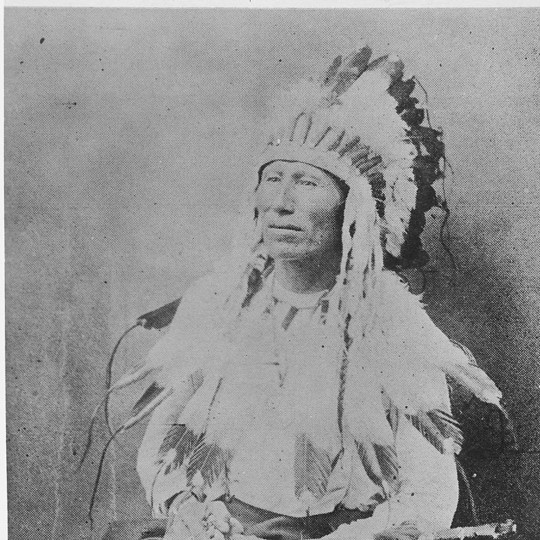
Morning Star (Dull Knife) - Eastman's Biography
Morning Star (Vooheheve, l. c. 1810-1883, better known as Dull Knife) was a Northern Cheyenne chief who led his people in resistance to the US government's policies of genocidal westward expansion. He participated in Red Cloud's War (1866-1868), various engagements between 1868-1876, and was defeated at the Battle on the Red Fork (the Dull Knife Fight) in 1876.
Afterwards, he and his people were forced from their homelands in the Dakota territories onto the reservation in modern-day Oklahoma. The conditions there were terrible and many died of disease and starvation. In 1878, Morning Star and Chief Little Wolf (also known as Little Coyote, l. c. 1820-1904) led their people out of the reservation in what has come to be known as the Northern Cheyenne Exodus, hoping to reach and reclaim their homelands in the region of modern-day Montana.
Little Wolf's band separated from the group, heading toward the Powder River territory, while Morning Star's band continued on, hoping to reach the Sioux chief Red Cloud (l. 1822-1909) and safety at the Red Cloud Agency (later the Pine Ridge Reservation). They were apprehended in October 1878 by the US Cavalry and brought to Fort Robinson where they were imprisoned and told they would have to return south to the reservation. Morning Star told the authorities:
All we ask is to be allowed to live, and live in peace…We bowed to the will of the Great Father and went south. There we found a Cheyenne cannot live. So we came home. Better it was, we thought, to die fighting than to perish of sickness…You may kill me here, but you cannot make me go back. We will not go. The only way to get us there is to come in here with clubs and knock us on the head and drag us out and take us down there dead. (Brown, 332)
Negotiations between Morning Star and authorities went nowhere, and, in early January 1879, it was decided food, water, and firewood rations would be withheld from the prisoners to force their compliance in returning south. The Cheyenne instead broke out, using weapons they had hidden in blankets and clothing, in an event later known as the Fort Robinson Breakout and Fort Robinson Massacre (9 January 1879). 60 Cheyenne were killed, 70 captured and returned to the fort, while Morning Star and a few others escaped and fled to the Red Cloud Agency where they were protected by Red Cloud.
Morning Star was then able to negotiate terms, which resulted in the establishment of the Northern Cheyenne Indian Reservation in Montana in 1884, although he would not live to see that, dying in 1883.
Eastman's Biography & Omissions
The Sioux physician, lecturer, and author Charles A. Eastman (also known as Ohiyesa, l. 1858-1939), includes Morning Star in his Indian Heroes and Great Chieftains (1916) by his Sioux name "Dull Knife" (which he is better known by, largely due to Eastman's work). Almost nothing is known of Morning Star's life prior to his participation in Red Cloud's War, and Eastman's biography reflects that.
The work includes anecdotes of the chief's younger years but focuses on his life after 1875 and, especially, the Northern Cheyenne Exodus and Fort Robinson Massacre. For unknown reasons, considering the usual accuracy of Eastman's biographies, he claims that Morning Star (Dull Knife) was killed at Fort Robinson in 1879 when it is known he lived until 1883, dying of natural causes. No explanation for this is available. The rest of the work is considered accurate, however, especially regarding Cheyenne support for the Great Sioux War (1876-1877) and the Northern Cheyenne Exodus.
Many details are omitted, however, including how Morning Star was among the chiefs present at the signing of the Fort Laramie Treaty of 1868, which ended Red Cloud's War and promised the Sioux their ancestral lands in the region of modern-day South Dakota, part of North Dakota, and Nebraska. This treaty was not honored by the US government, leading to further hostilities and, eventually, the Great Sioux War.
Morning Star was not present at the Battle of the Little Bighorn (Battle of the Greasy Grass, 25-26 June 1876) but was inspired by the victory of Sitting Bull (l. c. 1837-1890), Crazy Horse (l. c. 1840-1877), and Sioux war chief Gall (l. c. 1840-1894) to again take up arms against the US military. He and Little Wolf were defeated by troops under the command of Colonel Ranald S. Mackenzie (l. 1840-1889) and his Pawnee allies at the Battle on the Red Fork (the Dull Knife Fight) on 25 November 1876.
It was this defeat that led to the Northern Cheyenne being forcibly removed to the Southern Cheyenne Reservation in "Indian Territory" of modern-day Oklahoma in April 1877. The terrible conditions there then resulted in the Northern Cheyenne Exodus of 1878.
Continue reading...
46 notes
·
View notes
Text
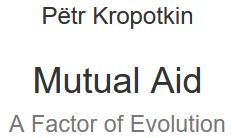
Footnotes 1 - 100
[1] Origin of Species, chap. iii.
[2] Nineteenth Century, Feb. 1888, p. 165.
[3] Leaving aside the pre-Darwinian writers, like Toussenel, Fée, and many others, several works containing many striking instances of mutual aid — chiefly, however, illustrating animal intelligence were issued previously to that date. I may mention those of Houzeau, Les facultés etales des animaux, 2 vols., Brussels, 1872; L. Büchner’s Aus dem Geistesleben der Thiere, 2nd ed. in 1877; and Maximilian Perty’s Ueber das Seelenleben der Thiere, Leipzig, 1876. Espinas published his most remarkable work, Les Sociétés animales, in 1877, and in that work he pointed out the importance of animal societies, and their bearing upon the preservation of species, and entered upon a most valuable discussion of the origin of societies. In fact, Espinas’s book contains all that has been written since upon mutual aid, and many good things besides. If I nevertheless make a special mention of Kessler’s address, it is because he raised mutual aid to the height of a law much more important in evolution than the law of mutual struggle. The same ideas were developed next year (in April 1881) by J. Lanessan in a lecture published in 1882 under this title: La lutte pour l’existence et l’association pour la lutte. G. Romanes’s capital work, Animal Intelligence, was issued in 1882, and followed next year by the Mental Evolution in Animals. About the same time (1883), Büchner published another work, Liebe und Liebes-Leben in der Thierwelt, a second edition of which was issued in 1885. The idea, as seen, was in the air.
[4] Memoirs (Trudy) of the St. Petersburg Society of Naturalists, vol. xi. 1880.
[5] See Appendix I.
[6] George J. Romanes’s Animal Intelligence, 1st ed. p. 233.
[7] Pierre Huber’s Les fourmis indigëes, Génève, 1861; Forel’s Recherches sur les fourmis de la Suisse, Zurich, 1874, and J.T. Moggridge’s Harvesting Ants and Trapdoor Spiders, London, 1873 and 1874, ought to be in the hands of every boy and girl. See also: Blanchard’s Métamorphoses des Insectes, Paris, 1868; J.H. Fabre’s Souvenirs entomologiques, Paris, 1886; Ebrard’s Etudes des mœurs des fourmis, Génève, 1864; Sir John Lubbock’s Ants, Bees, and Wasps, and so on.
[8] Forel’s Recherches, pp. 244, 275, 278. Huber’s description of the process is admirable. It also contains a hint as to the possible origin of the instinct (popular edition, pp. 158, 160). See Appendix II.
[9] The agriculture of the ants is so wonderful that for a long time it has been doubted. The fact is now so well proved by Mr. Moggridge, Dr. Lincecum, Mr. MacCook, Col. Sykes, and Dr. Jerdon, that no doubt is possible. See an excellent summary of evidence in Mr. Romanes’s work. See also Die Pilzgaerten einiger Süd-Amerikanischen Ameisen, by Alf. Moeller, in Schimper’s Botan. Mitth. aus den Tropen, vi. 1893.
[10] This second principle was not recognized at once. Former observers often spoke of kings, queens, managers, and so on; but since Huber and Forel have published their minute observations, no doubt is possible as to the free scope left for every individual’s initiative in whatever the ants do, including their wars.
[11] H.W. Bates, The Naturalist on the River Amazons, ii. 59 seq.
[12] N. Syevertsoff, Periodical Phenomena in the Life of Mammalia, Birds, and Reptiles of Voronèje, Moscow, 1855 (in Russian).
[13] A. Brehm, Life of Animals, iii. 477; all quotations after the French edition.
[14] Bates, p. 151.
[15] Catalogue raisonné des oiseaux de la faune pontique, in Démidoff’s Voyage; abstracts in Brehm, iii. 360. During their migrations birds of prey often associate. One flock, which H. Seebohm saw crossing the Pyrenees, represented a curious assemblage of “eight kites, one crane, and a peregrine falcon” (The Birds of Siberia, 1901, p. 417).
[16] Birds in the Northern Shires, p. 207.
[17] Max. Perty, Ueber das Seelenleben der Thiere (Leipzig, 1876), pp. 87, 103.
[18] G. H. Gurney, The House-Sparrow (London, 1885), p. 5.
[19] Dr. Elliot Couës, Birds of the Kerguelen Island, in Smithsonian Miscellaneous Collections, vol. xiii. No. 2, p. 11.
[20] Brehm, iv. 567.
[21] As to the house-sparrows, a New Zealand observer, Mr. T.W. Kirk, described as follows the attack of these “impudent” birds upon an “unfortunate” hawk. — “He heard one day a most unusual noise, as though all the small birds of the country had joined in one grand quarrel. Looking up, he saw a large hawk (C. gouldi — a carrion feeder) being buffeted by a flock of sparrows. They kept dashing at him in scores, and from all points at once. The unfortunate hawk was quite powerless. At last, approaching some scrub, the hawk dashed into it and remained there, while the sparrows congregated in groups round the bush, keeping up a constant chattering and noise” (Paper read before the New Zealand Institute; Nature, Oct. 10, 1891).
[22] Brehm, iv. 671 seq.
[23] R. Lendenfeld, in Der zoologische Garten, 1889.
[24] Syevettsoff’s Periodical Phenomena, p. 251.
[25] Seyfferlitz, quoted by Brehm, iv. 760.
[26] The Arctic Voyages of A.E. Nordenskjöld, London, 1879, p. 135. See also the powerful description of the St. Kilda islands by Mr. Dixon (quoted by Seebohm), and nearly all books of Arctic travel.
[27] See Appendix III.
[28] Elliot Couës, in Bulletin U.S. Geol. Survey of Territories, iv. No. 7, pp. 556, 579, etc. Among the gulls (Larus argentatus), Polyakoff saw on a marsh in Northern Russia, that the nesting grounds of a very great number of these birds were always patrolled by one male, which warned the colony of the approach of danger. All birds rose in such case and attacked the enemy with great vigour. The females, which had five or six nests together On each knoll of the marsh, kept a certain order in leaving their nests in search of food. The fledglings, which otherwise are extremely unprotected and easily become the prey of the rapacious birds, were never left alone (“Family Habits among the Aquatic Birds,” in Proceedings of the Zool. Section of St. Petersburg Soc. of Nat., Dec. 17, 1874).
[29] Brehm Father, quoted by A. Brehm, iv. 34 seq. See also White’s Natural History of Selborne, Letter XI.
[30] Dr. Couës, Birds of Dakota and Montana, in Bulletin U.S. Survey of Territories, iv. No. 7.
[31] It has often been intimated that larger birds may occasionally transport some of the smaller birds when they cross together the Mediterranean, but the fact still remains doubtful. On the other side, it is certain that some smaller birds join the bigger ones for migration. The fact has been noticed several times, and it was recently confirmed by L. Buxbaum at Raunheim. He saw several parties of cranes which had larks flying in the midst and on both sides of their migratory columns (Der zoologische Garten, 1886, p. 133).
[32] H. Seebohm and Ch. Dixon both mention this habit.
[33] The fact is well known to every field-naturalist, and with reference to England several examples may be found in Charles Dixon’s Among the Birds in Northern Shires. The chaffinches arrive during winter in vast flocks; and about the same time, i.e. in November, come flocks of bramblings; redwings also frequent the same places “in similar large companies,” and so on (pp. 165, 166).
[34] S.W. Baker, Wild Beasts, etc., vol. i. p. 316.
[35] Tschudi, Thierleben der Alpenwelt, p. 404.
[36] Houzeau’s Études, ii. 463.
[37] For their hunting associations see Sir E. Tennant’s Natural History of Ceylon, quoted in Romanes’s Animal Intelligence, p. 432.
[38] See Emil Hüter’s letter in L. Büchner’s Liebe.
[39] See Appendix IV.
[40] With regard to the viscacha it is very interesting to note that these highly-sociable little animals not only live peaceably together in each village, but that whole villages visit each other at nights. Sociability is thus extended to the whole species — not only to a given society, or to a nation, as we saw it with the ants. When the farmer destroys a viscacha-burrow, and buries the inhabitants under a heap of earth, other viscachas — we are told by Hudson — “come from a distance to dig out those that are buried alive” (l.c., p. 311). This is a widely-known fact in La Plata, verified by the author.
[41] Handbuch für Jäger und Jagdberechtigte, quoted by Brehm, ii. 223.
[42] Buffon’s Histoire Naturelle.
[43] In connection with the horses it is worthy of notice that the quagga zebra, which never comes together with the dauw zebra, nevertheless lives on excellent terms, not only with ostriches, which are very good sentries, but also with gazelles, several species of antelopes, and gnus. We thus have a case of mutual dislike between the quagga and the dauw which cannot be explained by competition for food. The fact that the quagga lives together with ruminants feeding on the same grass as itself excludes that hypothesis, and we must look for some incompatibility of character, as in the case of the hare and the rabbit. Cf., among others, Clive Phillips-Wolley’s Big Game Shooting (Badminton Library), which contains excellent illustrations of various species living together in East Africa.
[44] Our Tungus hunter, who was going to marry, and therefore was prompted by the desire of getting as many furs as he possibly could, was beating the hill-sides all day long on horseback in search of deer. His efforts were not rewarded by even so much as one fallow deer killed every day; and he was an excellent hunter.
[45] According to Samuel W. Baker, elephants combine in larger groups than the “compound family.” “I have frequently observed,” he wrote, “in the portion of Ceylon known as the Park Country, the tracks of elephants in great numbers which have evidently been considerable herds that have joined together in a general retreat from a ground which they considered insecure” (Wild Beasts and their Ways, vol. i. p. 102).
[46] Pigs, attacked by wolves, do the same (Hudson, l.c.).
[47] Romanes’s Animal Intelligence, p. 472.
[48] Brehm, i. 82; Darwin’s Descent of Man, ch. iii. The Kozloff expedition of 1899–1901 have also had to sustain in Northern Thibet a similar fight.
[49] The more strange was it to read in the previously-mentioned article by Huxley the following paraphrase of a well-known sentence of Rousseau: “The first men who substituted mutual peace for that of mutual war — whatever the motive which impelled them to take that step — created society” (Nineteenth Century, Feb. 1888, p. 165). Society has not been created by man; it is anterior to man.
[50] Such monographs as the chapter on “Music and Dancing in Nature” which we have in Hudson’s Naturalist on the La Plata, and Carl Gross’ Play of Animals, have already thrown a considerable light upon an instinct which is absolutely universal in Nature.
[51] Not only numerous species of birds possess the habit of assembling together — in many cases always at the same spot — to indulge in antics and dancing performances, but W.H. Hudson’s experience is that nearly all mammals and birds (“probably there are really no exceptions”) indulge frequently in more or less regular or set performances with or without sound, or composed of sound exclusively (p. 264).
[52] For the choruses of monkeys, see Brehm.
[53] Haygarth, Bush Life in Australia, p. 58.
[54] To quote but a few instances, a wounded badger was carried away by another badger suddenly appearing on the scene; rats have been seen feeding a blind couple (Seelenleben der Thiere, p. 64 seq.). Brehm himself saw two crows feeding in a hollow tree a third crow which was wounded; its wound was several weeks old (Hausfreund, 1874, 715; Büchner’s Liebe, 203). Mr. Blyth saw Indian crows feeding two or three blind comrades; and so on.
[55] Man and Beast, p. 344.
[56] L.H. Morgan, The American Beaver, 1868, p. 272; Descent of Man, ch. iv.
[57] One species of swallow is said to have caused the decrease of another swallow species in North America; the recent increase of the missel-thrush in Scotland has caused the decrease of the song.thrush; the brown rat has taken the place of the black rat in Europe; in Russia the small cockroach has everywhere driven before it its greater congener; and in Australia the imported hive-bee is rapidly exterminating the small stingless bee. Two other cases, but relative to domesticated animals, are mentioned in the preceding paragraph. While recalling these same facts, A.R. Wallace remarks in a footnote relative to the Scottish thrushes: “Prof. A. Newton, however, informs me that these species do not interfere in the way here stated” (Darwinism, p. 34). As to the brown rat, it is known that, owing to its amphibian habits, it usually stays in the lower parts of human dwellings (low cellars, sewers, etc.), as also on the banks of canals and rivers; it also undertakes distant migrations in numberless bands. The black rat, on the contrary, prefers staying in our dwellings themselves, under the floor, as well as in our stables and barns. It thus is much more exposed to be exterminated by man; and we cannot maintain, with any approach to certainty, that the black rat is being either exterminated or starved out by the brown rat and not by man.
[58] “But it may be urged that when several closely-allied species inhabit the same territory, we surely ought to find at the present time many transitional forms.... By my theory these allied species are descended from a common parent; and during the process of modification, each has become adapted to the conditions of life of its own region, and has supplanted and exterminated its original parent-form and all the transitional varieties between its past and present states” (Origin of Species, 6th ed. p. 134); also p. 137, 296 (all paragraph “On Extinction”).
[59] According to Madame Marie Pavloff, who has made a special study of this subject, they migrated from Asia to Africa, stayed there some time, and returned next to Asia. Whether this double migration be confirmed or not, the fact of a former extension of the ancestor of our horse over Asia, Africa, and America is settled beyond doubt.
[60] The Naturalist on the River Amazons, ii. 85, 95.
[61] Dr. B. Altum, Waldbeschädigungen durch Thiere und Gegenmittel (Berlin, 1889), pp. 207 seq.
[62] Dr. B. Altum, ut supra, pp. 13 and 187.
[63] A. Becker in the Bulletin de la Société des Naturalistes de Moscou, 1889, p. 625.
[64] See Appendix V.
[65] Russkaya Mysl, Sept. 1888: “The Theory of Beneficency of Struggle for Life, being a Preface to various Treatises on Botanics, Zoology, and Human Life,” by an Old Transformist.
[66] “One of the most frequent modes in which Natural Selection acts is, by adapting some individuals of a species to a somewhat different mode of life, whereby they are able to seize unappropriated places in Nature” (Origin of Species, p. 145) — in other words, to avoid competition.
[67] See Appendix VI.
[68] Nineteenth Century, February 1888, p. 165
[69] The Descent of Man, end of ch. ii. pp. 63 and 64 of the 2nd edition.
[70] Anthropologists who fully endorse the above views as regards man nevertheless intimate, sometimes, that the apes live in polygamous families, under the leadership of “a strong and jealous male.” I do not know how far that assertion is based upon conclusive observation. But the passage from Brehm’s Life of Animals, which is sometimes referred to, can hardly be taken as very conclusive. It occurs in his general description of monkeys; but his more detailed descriptions of separate species either contradict it or do not confirm it. Even as regards the cercopithèques, Brehm is affirmative in saying that they “nearly always live in bands, and very seldom in families” (French edition, p. 59). As to other species, the very numbers of their bands, always containing many males, render the “polygamous family” more than doubtful further observation is evidently wanted.
[71] Lubbock, Prehistoric Times, fifth edition, 1890.
[72] That extension of the ice-cap is admitted by most of the geologists who have specially studied the glacial age. The Russian Geological Survey already has taken this view as regards Russia, and most German specialists maintain it as regards Germany. The glaciation of most of the central plateau of France will not fail to be recognized by the French geologists, when they pay more attention to the glacial deposits altogether.
[73] Prehistoric Times, pp. 232 and 242.
[74] Bachofen, Das Mutterrecht, Stuttgart, 1861; Lewis H. Morgan, Ancient Society, or Researches in the Lines of Human Progress from Savagery through Barbarism to Civilization, New York, 1877; J.F. MacLennan, Studies in Ancient History, 1st series, new edition, 1886; 2nd series, 1896; L. Fison and A.W. Howitt, Kamilaroi and Kurnai, Melbourne. These four writers — as has been very truly remarked by Giraud Teulon, — starting from different facts and different general ideas, and following different methods, have come to the same conclusion. To Bachofen we owe the notion of the maternal family and the maternal succession; to Morgan — the system of kinship, Malayan and Turanian, and a highly gifted sketch of the main phases of human evolution; to MacLennan — the law of exogeny; and to Fison and Howitt — the cuadro, or scheme, of the conjugal societies in Australia. All four end in establishing the same fact of the tribal origin of the family. When Bachofen first drew attention to the maternal family, in his epoc.making work, and Morgan described the clan-organization, — both concurring to the almost general extension of these forms and maintaining that the marriage laws lie at the very basis of the consecutive steps of human evolution, they were accused of exaggeration. However, the most careful researches prosecuted since, by a phalanx of students of ancient law, have proved that all races of mankind bear traces of having passed through similar stages of development of marriage laws, such as we now see in force among certain savages. See the works of Post, Dargun, Kovalevsky, Lubbock, and their numerous followers: Lippert, Mucke, etc.
[75] See Appendix VII.
[76] For the Semites and the Aryans, see especially Prof. Maxim Kovalevsky’s Primitive Law (in Russian), Moscow, 1886 and 1887. Also his Lectures delivered at Stockholm (Tableau des origines et de l’évolution de la famille et de la propriété, Stockholm, 1890), which represents an admirable review of the whole question. Cf. also A. Post, Die Geschlechtsgenossenschaft der Urzeit, Oldenburg 1875.
[77] It would be impossible to enter here into a discussion of the origin of the marriage restrictions. Let me only remark that a division into groups, similar to Morgan’s Hawaian, exists among birds; the young broods live together separately from their parents. A like division might probably be traced among some mammals as well. As to the prohibition of relations between brothers and sisters, it is more likely to have arisen, not from speculations about the bad effects of consanguinity, which speculations really do not seem probable, but to avoid the too-easy precocity of like marriages. Under close cohabitation it must have become of imperious necessity. I must also remark that in discussing the origin of new customs altogether, we must keep in mind that the savages, like us, have their “thinkers” and savants — wizards, doctors, prophets, etc. — whose knowledge and ideas are in advance upon those of the masses. United as they are in their secret unions (another almost universal feature) they are certainly capable of exercising a powerful influence, and of enforcing customs the utility of which may not yet be recognized by the majority of the tribe.
[78] Col. Collins, in Philips’ Researches in South Africa, London, 1828. Quoted by Waitz, ii. 334.
[79] Lichtenstein’s Reisen im südlichen Afrika, ii. Pp. 92, 97. Berlin, 1811.
[80] Waitz, Anthropologie der Naturvolker, ii. pp. 335 seq. See also Fritsch’s Die Eingeboren Afrika’s, Breslau, 1872, pp. 386 seq.; and Drei Jahre in Süd Afrika. Also W. Bleck, A Brief Account of Bushmen Folklore, Capetown, 1875.
[81] Elisée Reclus, Géographie Universelle, xiii. 475.
[82] P. Kolben, The Present State of the Cape of Good Hope, translated from the German by Mr. Medley, London, 1731, vol. i. pp. 59, 71, 333, 336, etc.
[83] Quoted in Waitz’s Anthropologie, ii. 335 seq.
[84] The natives living in the north of Sidney, and speaking the Kamilaroi language, are best known under this aspect, through the capital work of Lorimer Fison and A.W. Howitt, Kamilaroi and Kurnaii, Melbourne, 1880. See also A.W. Howitt’s “Further Note on the Australian Class Systems,” in Journal of the Anthropological Institute, 1889, vol. xviii. p. 31, showing the wide extension of the same organization in Australia.
[85] The Folklore, Manners, etc., of Australian Aborigines, Adelaide, 1879, p. 11.
[86] Gray’s Journals of Two Expeditions of Discovery in North-West and Western Australia, London, 1841, vol. ii. pp. 237, 298.
[87] Bulletin de la Société d’Anthropologie, 1888, vol. xi. p. 652. I abridge the answers.
[88] Bulletin de la Société d’Anthropologie, 1888, vol. xi. p. 386.
[89] The same is the practice with the Papuas of Kaimani Bay, who have a high reputation of honesty. “It never happens that the Papua be untrue to his promise,” Finsch says in Neuguinea und seine Bewohner, Bremen, 1865, p. 829.
[90] Izvestia of the Russian Geographical Society, 1880, pp. 161 seq. Few books of travel give a better insight into the petty details of the daily life of savages than these scraps from Maklay’s notebooks.
[91] L.F. Martial, in Mission Scientifique au Cap Horn, Paris, 1883, vol. i. pp. 183–201.
[92] Captain Holm’s Expedition to East Greenland.
[93] In Australia whole clans have been seen exchanging all their wives, in order to conjure a calamity (Post, Studien zur Entwicklungsgeschichte des Familienrechts, 1890, p. 342). More brotherhood is their specific against calamities.
[94] Dr. H. Rink, The Eskimo Tribes, p. 26 (Meddelelser om Grönland, vol. xi. 1887).
[95] Dr. Rink, loc. cit. p. 24. Europeans, grown in the respect of Roman law, are seldom capable of understanding that force of tribal authority. “In fact,” Dr. Rink writes, “it is not the exception, but the rule, that white men who have stayed for ten or twenty years among the Eskimo, return without any real addition to their knowledge of the traditional ideas upon which their social state is based. The white man, whether a missionary or a trader, is firm in his dogmatic opinion that the most vulgar European is better than the most distinguished native.” — The Eskimo Tribes, p. 31.
[96] Dall, Alaska and its Resources, Cambridge, U.S., 1870.
[97] Dall saw it in Alaska, Jacobsen at Ignitok in the vicinity of the Bering Strait. Gilbert Sproat mentions it among the Vancouver indians; and Dr. Rink, who describes the periodical exhibitions just mentioned, adds: “The principal use of the accumulation of personal wealth is for periodically distributing it.” He also mentions (loc. cit. p. 31) “the destruction of property for the same purpose,’ (of maintaining equality).
[98] See Appendix VIII.
[99] Veniaminoff, Memoirs relative to the District of Unalashka (Russian), 3 vols. St. Petersburg, 1840. Extracts, in English, from the above are given in Dall’s Alaska. A like description of the Australians’ morality is given in Nature, xlii. p. 639.
[100] It is most remarkable that several writers (Middendorff, Schrenk, O. Finsch) described the Ostyaks and Samoyedes in almost the same words. Even when drunken, their quarrels are insignificant. “For a hundred years one single murder has been committed in the tundra;” “their children never fight;” “anything may be left for years in the tundra, even food and gin, and nobody will touch it;” and so on. Gilbert Sproat “never witnessed a fight between two sober natives” of the Aht Indians of Vancouver Island. “Quarreling is also rare among their children.” (Rink, loc. cit.) And so on.
#organization#revolution#mutual aid#anarchism#daily posts#communism#anti capitalist#anti capitalism#late stage capitalism#anarchy#anarchists#libraries#leftism#social issues#economy#economics#climate change#anarchy works#environmentalism#environment#solarpunk#anti colonialism#a factor of evolution#petr kropotkin
16 notes
·
View notes
Text







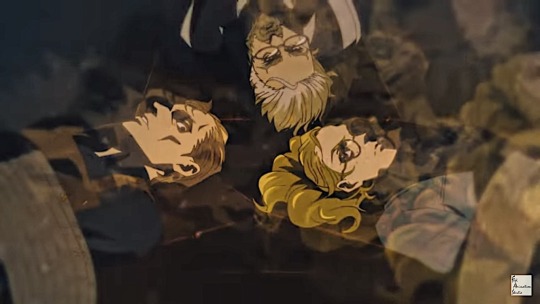

Episode 10, Misty Hollow
Taku Yashiro, who is going to voice Spitz Feier in the upcoming “Ron Kamonohashi: The Forbidden Detective,” is the voice of Tsugaru Shinuchi, the Oni slayer and a third of the Birdcage Users. A Pash + article recounted his distinct style of voicing the Onigoroshi. It is so different from his past (and ongoing) works (“Raven of the Inner Palace” or on “Horimiya”).
He said the way Tsugaru speaks is called “Beranme tone.” It is the language of the Tokyoite working class, which is similar to the Cockney accent of East London.
I recorded it while discussing with the sound director Wakabayashi (Kazuhiro). … There is a real rakugo in the work, so I heard the same story of various people. Then I also checked things like how to use words that can be heard in the old sound source.
Basically, Taku was also inspired by the classic Edo-rakugo. This type of theater performance can be likened to stand-up comedy of the West. We know Noh and Kabuki, but rakugo is not so well-known.
In rakugo, the performer sits on a cushion on stage and tells a funny story to the audience by using minimal props, namely a fan and a tenugui. The origins of this art form can be traced to the mid-Edo period (1603-1868), and by the end of 1700s, there were regular rakugo performances attended by ordinary people at venues in Edo, Osaka, and Kyoto. Classic Edo-rakugo is told in sharp downtown Tokyo dialect called beranme (pronounced like bay-run-may).”

During Episode 9, Tsugaru imagined himself doing the rakugo.
#undead girl murder farce#undead murder farce#tsugaru shinuchi#aya rindo#shizuku hasei#episode 10#misty hollow#werewolves#taku yashiro#rakugo
20 notes
·
View notes
Text
"In the end I had to go to the bedroom where I was laid on a terrible couch. And then it all started with pain and my moaning. The emperor held one of my hands, Sasha did not let go of the other, and the empress came up from time to time and kissed me. Finally it was all over, and the cry of the baby announced the birth of our angelic son. I will never forget this happy moment in my life. I thanked the Lord for the fact that everything was over and that He gave us a son. Dear Sasha, who had been restraining himself all this time, was now sobbing like a child. And we all congratulated each other: parents, grandparents, those - us, and I thought about my beloved parents.
At 4:30 everything was over. Bazhanov came and read prayers, and my Sasha held the little one in his arms. Then Madame Mikhailova helped carry me to bed, where I immediately fell asleep. In the evening, my father-in-law came again, and, thank God, I felt completely healthy. My Sasha and I were in complete bliss!!! At 8:30 I fell asleep and woke up only at 9:30 the next day."
Maria Feodorovna on the birth of her first child, Nicholas II (May 6/18, 1868)



#maria feodorovna#nicholas ii#russia#tsar nicholas ii#czar nicholas ii#alexander iii#tsar alexander iii#czar alexander iii#the romanovs#imperial russia#history#historical couples#alexander ii#royalty#royals#baby
26 notes
·
View notes
Text

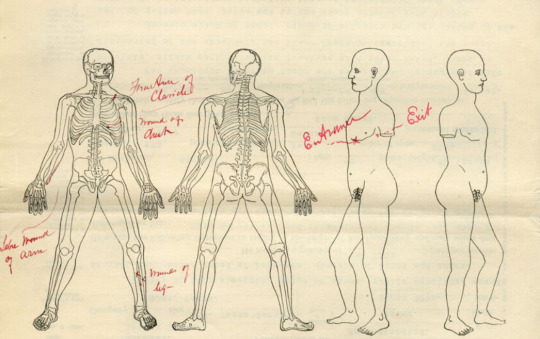
2nd Lieutenant Santos Cadena details the injuries he received in the American Civil War, the Mexican Reform War, and the Second Franco-Mexican War. Affidavit (5/4/1898) and diagram (3/28/1904) from his Civil War pension file.
Record Group 15: Records of the Department of Veterans Affairs
Series: Case Files of Approved Pension Applications of Widows and Other Dependents of the Army and Navy Who Served Mainly in the Civil War and the War With Spain
Image description: Four diagrams of a man, two showing the skeleton and two showing the outside of the body (without arms). Marked in red ink are “Fracture of Clavicle,” “Wound of Chest,” “Sabre Wound of Arm,” “Wounds of leg,” and entrance and exit of the chest wound.
Transcription:
GENERAL AFFIDAVIT.
STATE OF Texas, COUNTY OF Duval ss:
In the matter of Santos Cadena - late Co “B” 2nd Tex, Cavly Vols,
ON THIS 4th. day of May, A.D. 1898., personally appeared before me, a Notary Public in and for the aforesaid County and State, duly authorized to administer oaths Santos Cadena, aged 68 years, a resident of Rancho Salado, in the County of Starr and State of Texas, who, being duly sworn, declares in relation to aforesaid claim as follows:
I received a gunshot wound of the left nipple or chest in front of Matamoros in the year 1866 under the command of General Mariano Escobedo, of the Mexican Liberal Army,
I received a Gunshot wound in the left leg in year 1860 in a battle at Gunajuata Mexico, with General Jose Maria. J. Carabajal, of the Mexican Liberal Army,
I received a Saber cut of the left arm in the action of Sialo. West of Guanajuata Mexico, under command of General Carabajal of the Mexican Liberal army,
I had my collar bone broken in the service of the United States near La Trinidad Ranch in Nueces County Texas, in the year 1864 I was a second Lieutenant and was sent out by Colonel J L. Naynes, of the 2nd. Texas Cavalry Volunteers to get some horses for the command and in running the Horses to take them to the pens my horse fell and broke my collar bone, None of the foregoing wounds were caused by Viscious habits,
The Gunshot wound in left nipple, and the Gunshot wound in left leg and the saber cut in left arm were received by my while I was in the Mexican Army, in 1860 I was fighting for Mexico against the Reacitionary or Church party in Mexico, and in 1866 I was fighting against the Imperialists who had invaded my country, I am a Mexican by birth but am an American Citizen,
He further declares that he has [“no” crossed out] interest in said case and is [“not” crossed out] concerned in its prosecution. He being the applicant.
X [signed] Clemente Pompa
X [signed Imalio[?] Perez
His
Santos X Cadena
Mark
NOTE.- In the execution of evidence, whenever a witness signs by X mark, two persons WHO CAN WRITE, MUST attest the signature by signing their names opposite.
[circular stamp]
PENSION
US
OFFICE
MAY 9 1898
[end stamp]
[along left margin]
The foregoing was prepared for typewriting from the statements of the witness in his presence and from my oral statements then made, said oral statements were made to Jas. O. Luby, Notary Public Duval County Texas, at his office in San diego said County and State, May 4th. 1868. And did not use and was not aided or prompted by any printed statement or recital, prepared or dictated by any other per so
#archivesgov#May 4#1898#1800s#March 28#1904#1900s#military#U.S. Civil War#Guerra de Reforma#Segunda intervención francesa en México#injuries
27 notes
·
View notes
Text
Thank you to @abrubag for helping me make this very important compilation:

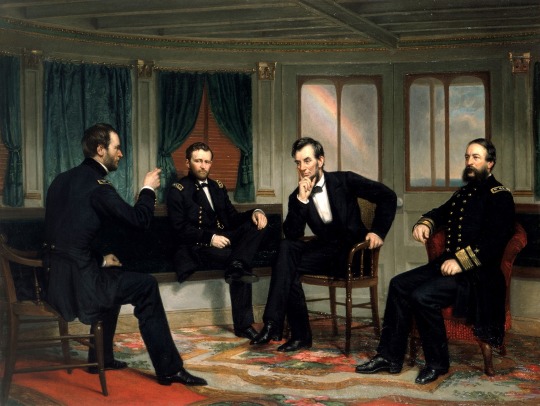
1. The Peacemakers, George P.A. Healy, Oval Office. 1868. https://en.wikipedia.org/wiki/The_Peacemakers

2. George Washington before the Battle of Trenton, John Trumbull, Metropolitan Museum of Art. 1792. https://www.metmuseum.org/art/collection/search/12823

3. Battle of Port Hudson, J.O. Davis, Library of Congress. 1887. https://www.loc.gov/item/93510334/

4. A Good Chance, Arthur Fitzwilliam Tait, Yale University. 1862. https://commons.wikimedia.org/wiki/File:Arthur_Fitzwilliam_Tait_-_A_Good_Chance_-_1932.244_-_Yale_University_Art_Gallery.jpg

5. Battle of Kenesaw Mountian, Kurz & Allison (chromolithograph publishers), Library of Congress. 1891. https://commons.wikimedia.org/wiki/File:Battle_of_Kenesaw_Mountian.png

6. The capture of General Vega (In the act of discharging a canon) by the gallant Capt. May, of the U.S. Army, during the engagement of the 9th May / / Lith. & pub. by Sarony & Major, 117 Fulton St. N.Y.! Library of Congress. 1846. https://loc.getarchive.net/media/the-capture-of-general-vega-in-the-act-of-discharging-a-canon-by-the-gallant

7. Benjamin Franklin: The statesman and philosopher. Currier & Ives. 1846. https://loc.getarchive.net/media/benjamin-franklin-the-statesman-and-philosopher

8. Watson and the Shark, John Singleton Copley. Museum of Fine Arts Boston. 1778. https://collections.mfa.org/objects/30998/watson-and-the-shark

9. George Washington (Lansdowne Portrait), Gilbert Stuart. National Portrait Gallery. 1796. https://npg.si.edu/object/npg_NPG.2001.13
32 notes
·
View notes
Text
irl bsd authors
i haven't found a list of irl bsd authors listed from oldest to most recent so i decided to do that. multiple lists for date of birth, death, and publication of the work their ability is based on (if applicable) + fun stuff at the end
birth dates (oldest to most recent)
alexander pushkin - 6 Jun 1799
nathaniel hawthorne - 4 Jul 1804
edgar allan poe - 19 Jan 1809
nikolai gogol - 1 Apr 1809
ivan gonchorav - 18 Jun 1812
herman melville - 1 Aug 1819
fyodor dostoevsky - 11 Nov 1821
jules verne - 8 Feb 1828
saigiku jōno - 24 Sep 1832
louisa may alcott - 29 Nov 1832
yukichi fukuzawa - 10 Jan 1835
mark twain - 30 Nov 1835
ōchi fukuchi - 13 May 1841
paul verlaine - 30 Mar 1844
bram stoker - 8 Nov 1847
tetchō suehiro - 15 Mar 1849
arthur rimbaud - 20 Oct 1854
ryūrō hirotsu - 15 Jul 1861
ōgai mori - 17 Feb 1862
h. g. wells - 21 Sep 1866
natsume sōseki - 9 Feb 1867
kōyō ozaki - 10 Jan 1868
andré gide - 22 Nov 1869
doppo kunikida - 30 Aug 1871
katai tayama - 22 Jan 1872
ichiyō higuchi - 2 May 1872
kyōka izumi - 4 Nov 1873
lucy maud montgomery - 30 Nov 1874
akiko yosano - 7 Dec 1878
santōka taneda - 3 Dec 1882
teruko ōkura - 12 Apr 1886
jun'ichirō tanizaki - 24 Jul 1886
yumeno kyūsaku - 4 Jan 1889
h. p. lovecraft - 20 Aug 1890
agatha christie - 15 Sep 1890
ryūnosuke akutagawa - 1 Mar 1892
ranpo edogawa - 21 Oct 1894
kenji miyazawa - 27 Aug 1896
f. scott fitzgerald - 24 Sep 1896
margaret mitchell - 8 Nov 1900
motojirō kajii - 17 Feb 1901
mushitarō oguri - 14 Mar 1901
john steinbeck - 27 Feb 1902
aya kōda - 1 Sep 1904
ango sakaguchi - 20 Oct 1906
chūya nakahara - 29 Apr 1907
atsushi nakajima - 5 May 1909
osamu dazai - 19 Jun 1909
sakunosuke oda - 26 Oct 1913
michizō tachihara - 30 Jul 1914
tatsuhiko shibusawa - 8 May 1928
(ace) alan bennett - 9 May 1934
yukito ayatsuji - 23 Dec 1960
mizuki tsujimura - 29 Feb 1980
death dates (oldest to most recent)
alexander pushkin - 10 Feb 1837
edgar allan poe - 7 Oct 1849
nikolai gogol - 4 Mar 1852
nathaniel hawthorne - 19 May 1864
fyodor dostoevsky - 9 Feb 1881
louisa may alcott - 6 Mar 1888
ivan goncharov - 27 Sep 1891
herman melville - 28 Sep 1891
arthur rimbaud - 10 Nov 1891
paul verlaine - 8 Jan 1896
tetchō suehiro - 5 Feb 1896
ichiyō higuchi - 23 Nov 1896
yukichi fukuzawa - 3 Feb 1901
saigiku jōno - 24 Jan 1904
jules verne - 24 Mar 1905
kōyō ozaki - 30 Oct 1903
ōchi fukuchi - 4 Jan 1906
doppo kunikida - 23 Jun 1908
mark twain - 21 Apr 1910
bram stoker - 20 Apr 1912
natsume sōseki - 9 Dec 1916
ōgai mori - 8 Jul 1922
ryūrō hirotsu - 25 Oct 1928
ryūnosuke akutagawa - 24 Jul 1927
katai tayama - 13 May 1930
motojirō kajii - 24 Mar 1932
kenji miyazawa - 21 Sep 1933
yumeno kyūsaku - 11 Mar 1936
h. p. lovecraft - 15 Mar 1937
chūya nakahara - 22 Oct 1937
michizō tachihara - 29 Mar 1939
kyōka izumi - 7 Sep 1939
santōka taneda - 11 Oct 1940
f. scott fitzgerald - 21 Dec 1940
lucy maud montgomery - 24 Apr 1942
mushitarō oguri - 10 Feb 1946
h. g. wells - 13 Aug 1946
akiko yosano - 29 May 1942
atsushi nakajima - 4 Dec 1942
sakunosuke oda - 10 Jan 1947
osamu dazai - 13 Jun 1948
margaret mitchell - 16 Aug 1949
andré gide - 19 Feb 1951
ango sakaguchi - 17 Feb 1955
teruko ōkura - 18 Jul 1960
ranpo edogawa - 28 Jul 1965
jun'ichirō tanizaki - 30 Jul 1965
john steinbeck - 20 Dec 1968
agatha christie - 12 Jan 1976
tatsuhiko shibusawa - 5 Aug 1987
aya kōda - 31 Oct 1990
(ace) allan bennett - still alive
yukito ayatsuji - still alive
mizuki tsujimura - still alive
work (oldest to most recent)
alexander pushkin - A Feast in Time of Plague, 1830
edgar allan poe - The Murders in Rue Morgue, 1841
nikolai gogol - The Overcoat, 1842
edgar allan poe - The Black Cat, 19 Aug 1843
nathaniel hawthorne - The Scarlet Letter, 1850
herman melville - Moby-Dick, 1851
louisa may alcott - Little Women, 1858
fyodor dostoevsky - Crime and Punishment, 1866
ivan goncharov - The Precipice, 1869
yukichi fukuzawa - An Encouragement of Learning, 1872-76
jules verne - The Mysterious Island, 1875
mark twain - The Adventures of Tom Sawyer, 1876
mark twain - Adventures of Huckleberry Finn, 1884
tetchō suehiro - Plum Blossoms in the Snow, 1886
arthur rimbaud - Illuminations, 1886
saigiku jōno - Priceless Tears, 1889
ōchi fukuchi - The Mirror Lion, A Spring Diversion, Mar 1893
ryūrō hirotsu - Falling Camellia, 1894
h. g. wells - The Time Machine, 1895
kōyō ozaki - The Golden Demon, 1897
bram stoker - Dracula, 1897 (his ability has not been named, but c’mon, vampires)
akiko yosano - Thou Shall Not Die, 1903
natsume sōseki - I Am a Cat, 1905-06
katai tayama - Futon, 1907
lucy maud montgomery - Anne of Green Gables, 1908
ōgai mori - Vita Sexualis, 1909
andré gide - Strait is the Gate, 1909
kyōka izumi - Demon Pond, 1913
ryūnosuke akutagawa - Rashomon, 1915
motojirō kajii - Lemon, 1924
f. scott fitzgerald - The Great Gatsby, 1925
kenji miyazawa - Be not Defeated by the Rain, 3 Nov 1931
santōka taneda - Self-Derision, 8 Jan 1932
mushitarō oguri - Perfect Crime, 1933
chūya nakahara - This Tainted Sorrow, 1934
yumeno kyūsaku - Dogra Magra, 1935
margaret mitchell - Gone With the Wind, 1936
john steinbeck - The Grapes of Wrath, 1939
agatha christie - And Then There Were None, 6 Nov 1939
atsushi nakajima - The Moon Over the Mountain, Feb 1942
jun'ichirō tanizaki - The Makioka Sisters, 1943-48
ango sakaguchi - Discourse on Decadence, 1946
teruko ōkura - Gasp of the Soul, 1947
osamu dazai - No Longer Human, 1948
(ace) alan bennett - The Madness of King George III, 1995
yukito ayatsuji - Another, 2005
mizuki tsujimura - Yesterday’s Shadow Tag, 2015
can’t find dates:
michizō tachihara - Midwinter Memento
sakunosuke oda - Flawless
n/a: doppo kunikida, ranpo edogawa, ichiyō higuchi, h. p. lovecraft “Great Old Ones” (fictional ancient dieties eg. cthulhu), aya koda, paul verlaine, tatsuhiko shibusawa “Draconia” (umbrella term for shibusawa’s works/style)
bonus:
elise - The Dancing Girl (1890) by ōgai mori
shōsaku katsura - An Uncommon Common Man by doppo kunikida
Nobuko Sasaki (20 Jul 1878 - 22 Sep 1949) - doppo kunikida’s first wife
gin akutagawa - O-gin (1922) by ryūnosuke akutagawa
naomi tanizaki + kirako haruno - Naomi (1925) by jun'ichirō tanizaki
t. j. eckelburg + tom buchanan - The Great Gatsby (1925) by f. scott fitzgerald
the black lizard - Back Lizard (1895) by ryūrō hirotsu (+ The Black Lizard (1934) by ranpo edogawa)
some fun facts:
the oldest: aya koda 86, andré gide 81, h. g. wells 79, jun'ichirō tanizaki 79, ivan goncharov 79 (alan bennett is 89 but still alive)
the youngest: ichiyō higuchi 24, michizō tachihara 24, chūya nakahara 30
yukito ayatsuji’s Another is also an anime, released in 2012
both edgar allan poe and mark twain’s ability consist of two of the author’s work
14 notes
·
View notes
Text
ŘEZNÍČEK, Ferdinand von. Jugend, Nº 9. 1897
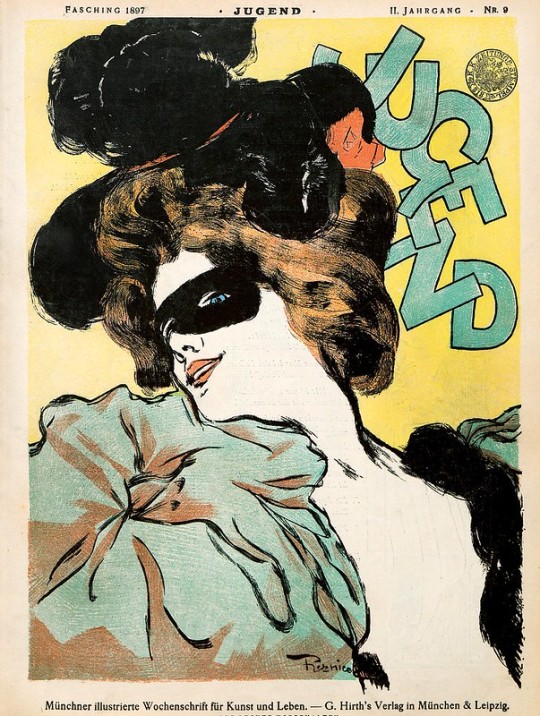
Ferdinand Freiherr von Řezníček was an Austrian painter, illustrator, and graphic artist.
Born: June 16, 1868, Unter-Sievering, Vienna, Austria
Died: May 11, 1909, Munich, Germany
8 notes
·
View notes
Text

Memorial Day has long been known as a holiday to celebrate and honor America’s soldiers.
The Civil War ended on April 9, 1865, with the Union victorious over its Confederate foes. To celebrate the victory and honor the dead, on May 1 of that year around 10,000 freed African Americans gathered in historic Hampton Park.
The group placed flowers on the graves of unknown soldiers, a practice held often in times of war. The event caught the attention of the nation, and it was understood by Whites to be a celebration of the Emancipation Proclamation passed in 1863.
The town was a Confederate stronghold, and over 250 soldiers died as prisoners there as Union forces began to overtake the region. The Confederate soldiers buried the dead in unmarked graves and fled in fear. The freed African Americans who came to the Decoration Day event viewed those soldiers as martyrs who died selflessly for their freedom. While there were African American soldiers in the Union Army, the celebration was in honor of all who fought for the winning side.
The website Snopes, which acknowledges that African Americans founded Memorial Day, says the commemoration was formalized by an order issued in 1868 by Maj. Gen. John A. Logan, the commander in chief of the Grand Army of the Republic, called for the annual decoration of war graves.
Three years after the Civil War ended, on May 5, 1868, the head of an organization of Union veterans — the Grand Army of the Republic — established Decoration Day as a time for the nation to decorate the graves of the war dead with flowers. Maj. Gen. John A. Logan declared that Decoration Day should be observed on May 30. It is believed that the date was chosen because flowers would be in bloom all over the country….
In May 1966 the city of Waterloo, New York, was designated as the “Birthplace of Memorial Day” via a Congressional resolution and presidential proclamation commemorating a patriotic observance held in that town one hundred years earlier.
We can add Memorial Day to African Americans’ innumerable contributions to the US.
Happy Memorial Day! #africanhistory365 #africanexcellence
1 note
·
View note
Text
EMDT Historical Tournament


Character 1
Complete name: Enriqueta Martí Ripoll "La Vampira del Raval" (San Feliú de Llobregat, February 2, 1868 – Barcelona, May 12, 1913)
Status/Proffesion/Charge: Medicaster, prostitute, pimp and serial killer (allegedly)
Actress: María Rodríguez
Episodes: 2×06, Tiempo de magia 2×09, Óleo sobre tiempo
2×10, Separadas por el tiempo
Character 2
Complete name: Jaime Blanch Montijano (Collado Villalba, September 9, 1940-)
Status/Proffesion/Charge: Actor
Actor: Raúl Mérida
Episode: 3×13, Entre dos tiempos
#emdt historical tournament#el ministerio del tiempo#emdt#duel 16#emdt polls#enriqueta martí#jaime blanch#maría rodríguez#raúl mérida
5 notes
·
View notes
Photo

Great Sioux War
The Great Sioux War (also given as the Black Hills War, 1876-1877) was a military conflict between the allied forces of the Lakota Sioux/Northern Cheyenne and the US government over the territory of the Black Hills and, more widely, US policies of westward expansion and the appropriation of Native American lands.
The Fort Laramie Treaty of 1868 had established the Great Sioux Reservation, including the Black Hills, and promised this land to the Sioux in perpetuity. When gold was discovered in the Black Hills in 1874, the treaty was ignored by the US government, leading to the Black Hills Gold Rush of 1876. The Sioux, Northern Cheyenne, and Arapaho responded with armed resistance in raids on wagon trains, skirmishes, and five major battles fought between March 1876 and January 1877:
Battle of Powder River (Reynolds Battle) – 17 March 1876
Battle of the Rosebud (Battle Where the Girl Saved Her Brother) – 17 June 1876
Battle of the Little Bighorn (Battle of the Greasy Grass) – 25-26 June 1876
Battle of Slim Buttes – 9-10 September 1876
Battle of Wolf Mountain (Battle of Belly Butte) – 8 January 1877
In between these, were so-called minor engagements with casualties on both sides but, after June 1876, greater losses for the Sioux and Cheyenne. The final armed conflict of the Great Sioux War was the Battle of Muddy Creek (the Lame Deer Fight, 7-8 May 1877), by which time the Sioux war chief Crazy Horse (l. c. 1840-1877) had already surrendered and the chief Sitting Bull (l. c. 1837-1890) and Sioux war chief Gall (l.c. 1840-1894) and others had fled to the region of modern-day Canada. Although the war was over by May 1877, ending in a victory for the US military, some bands of Sioux and Cheyenne continued to struggle against reservation life until the Wounded Knee Massacre of 29 December 1890 broke their resistance.
Background
Although the first armed conflict between the Plains Indians and Euro-Americans was in 1823, problems between the Sioux and the US military began on 19 August 1854 with the Grattan Fight (Grattan Massacre), when 2nd Lieutenant John L. Grattan led his command of 30 soldiers to the camp of Chief Conquering Bear (l. c. 1800-1854) to demand the surrender of a man they claimed had stolen a cow from a Mormon wagon train.
Conquering Bear refused to surrender anyone, offering compensation instead, and, as the negotiations broke down, Grattan's men fired on the Sioux, mortally wounding Conquering Bear, and the Sioux warriors retaliated, killing Grattan and all of his command. The US military responded with campaigns against the Sioux in the First Sioux War of 1854-1856, which also included actions against their allies, the Cheyenne and Arapaho.
Tensions escalated after the opening of the Bozeman Trail in 1863, the establishment of forts to protect white settlers using the trail, and the Sand Creek Massacre of 29 November 1864. Red Cloud's War (1866-1868) was launched in response to the construction of these forts and the policies of the US government, concluding with the Fort Laramie Treaty of 1868, which established the Great Sioux Reservation (modern-day South Dakota and parts of North Dakota and Nebraska), including the Black Hills – a site sacred to the Sioux – which was promised to them for "as long as the grass should grow and the rivers flow."
When Lt. Colonel George Armstrong Custer (l. 1839-1876) discovered gold in the Black Hills in 1874, the Fort Laramie treaty was broken as over 15,000 white settlers and miners streamed into the region during the Black Hills Gold Rush of 1876. The US government offered to purchase the Black Hills, but the Sioux would not sell. More settlers arrived, the government ignored Sioux demands that the 1868 treaty be honored, and the Great Sioux War began in March of that year, with the Reynolds campaign on the Powder River.
Continue reading...
40 notes
·
View notes
Text
According To Employers, It Seems Like No One Ever Wanted To Work In Cincinnati
You hear it all the time these days, “No one wants to work anymore.” You may notice that this complaint is usually voiced by employers who do not want to increase wages, offer better benefits or improve working conditions.
Cincinnati employers have been complaining about an allegedly lazy workforce for a long, long time. To take one example, a correspondent identified only as “Taxpayer” wrote to the Cincinnati Gazette on 2 January 1832 – more than 190 years ago – grumbling that local workmen engaged in building canals and railroads were earning way too much and that this luxuriance ($1.50 to $2.50 per day at that time) would engender a disinclination to work altogether:
“I am therefore opposed to making any more Internal Improvements leading to this city. I predict, if they are made, that money will be too plenty; the laboring class will become too lazy to work, and the construction of the Roads and Canals will require more than 10,000 additional laborers, who must all be fed and clothed.”
And here is the Cincinnati Enquirer from 6 February 1868 opining that the unemployed residents of the city are suffering from their own aversion to gainful employment:
“While there is no question that poverty, want and destitution exist to an alarming degree, it is at the same time certain that the city is burdened with the partial support of scores, yes, hundreds of paupers, who, too lazy to work, are the most noisy claimants for public charity.”
Later that year, on 25 November 1868, the Cincinnati Presbyter called upon men to settle for minimal wages and enjoy being poor:
“Men who are not too lazy to work, nor too proud to be poor. Men who are willing to eat what they have earned, and wear what they have paid for.”
The 1873-79 financial panic was long-lasting and brutal to the working class. The Cincinnati Gazette [25 June 1878] suggested that many men who had lost their jobs just weren’t trying hard enough:
“Then as to the scarcity of employment. There is a scarcity, no doubt about that, but it is not near so great as it seems; nor are all of those out of employment people who know how to work, or really desire to work.”
A national publication, the anti-union Open Shop Review, in 1913 blamed new laws prohibiting child labor with fostering laziness in the current generation:
“The young men and women legislated out of employment until 16 years of age are a serious proposition to their parents who are working every day for a respectable living. The law does not say that these youngsters shall not eat, nor does it provide food for them, yet thousands of well-developed, husky boys and girls are forced to idleness during the period they are developing the strongest, and the result is a growing generation, adverse to work in any form, made so by laws that forbid them to work until a given age is reached.”
The same publication even ran the lyrics to a “Song Of The Little People,” by the possibly pseudonymous Lelia B. N. Weston, chastising people who, regardless of whether they can afford boots, don’t endeavor to pull themselves up by their own bootstraps:
They grovel and grumble in sore discontent.
They struggle and ache with internal dissent;
They shudder and shiver and wrangle and hate,
And cry as they shirk:
“We want to be great, we want to be great —
But we don’t want to work!”
A farmer named Ira V. Randall told the Cincinnati Post [4 February 1920] that food prices were going up because people were just too darn lazy:
“Thousands of acres of land are going to brush and briers here because there is no one to work on the land. There is plenty of money, but no one wants to work for what a farmer can pay, altho farm labor has advanced from 100 to 200 per cent in 20 years.”
The Post reported dire forecasts by business theorist Roger W. Babson, who claimed that automobiles were sapping the initiative of American workers. According to Babson [9 May 1924]:
“Today American and Canadian business is running on its momentum. Everyone wants to ride in autos and no one wants to work. Some aggressive steps must be taken at once or business will gradually but surely decline.”
In 1977, Cincinnati’s hired economist reported that many companies blamed organized labor for the Tri-State region’s decline in manufacturing capacity. At a city council hearing on 18 October, Saul Pleeter quoted the corporate line, according to the Post:
“In talking to prospective manufacturers, Pleeter said, ‘you hear comments like the unions won’t let you fire anyone anymore . . . no one wants to work hard anymore.’ Whether the comments are true or not, Pleeter said, the fact that they are believed by a manufacturer could influence his decision on plant location.”
More than 25 years ago, Enquirer columnist Andrea Kay [22 March 1996] was still beating the same old drum:
“Company owners, on the other hand, tell me how they can’t find good workers. One employer hired two people last week – neither showed up for their first day of work. Another person worked two days and never bothered to tell the owner she quit.”
As you can see, the pattern for the past 190 years has been to blame the laborer instead of asking what sort of work environment, including amenities and benefits as well as salary, might actually entice enthusiastic workers. Over the course of almost two centuries, there were undoubtedly a variety of factors creating the impression that “no one wants to work anymore,” but the consistent reappearance of this attitude suggests that maybe, just maybe, someone might be misinterpreting the situation.

19 notes
·
View notes
Text
1869-Battle of Hakodate
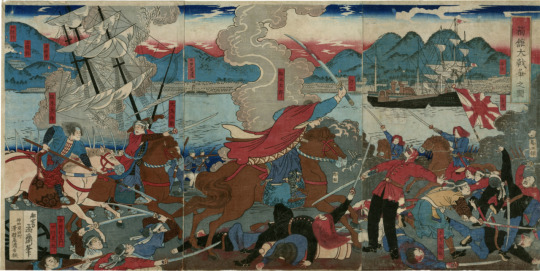
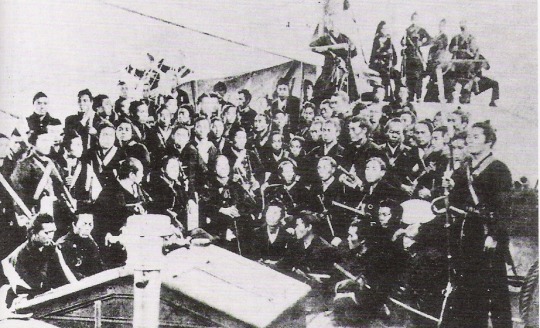
The Battle of Hakodate (箱館戦争, Hakodate Sensō) was fought in Japan from December 4, 1868 to June 27, 1869, between the remnants of the Tokugawa shogunate army, consolidated into the armed forces of the rebel Ezo Republic, and the armies of the newly formed Imperial government (composed mainly of forces of the Chōshū and the Satsuma domains). It was the last stage of the Boshin War, and occurred around Hakodate in the northern Japanese island of Hokkaidō.
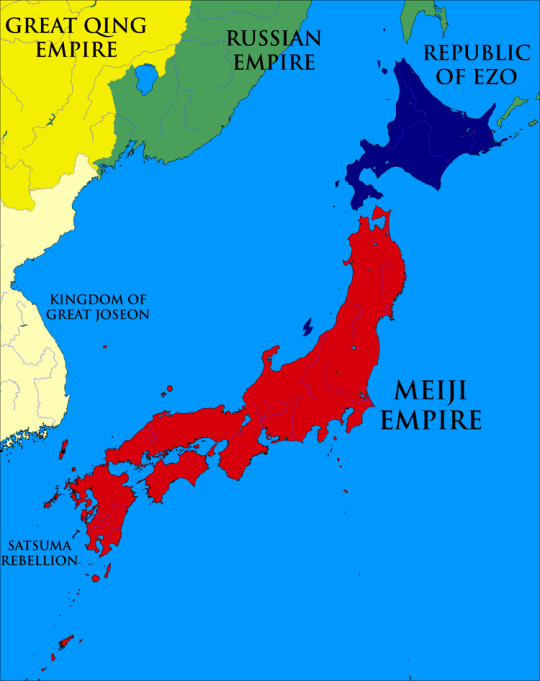

The Imperial troops, numbering 7,000, finally landed on Hokkaidō on April 9, 1869. They progressively took over various defensive positions, until the final stand occurred around the fortress of Goryōkaku and Benten Daiba around the city of Hakodate.
Japan's first major naval engagement between two modern navies, the Naval Battle of Hakodate Bay, occurred towards the end of the conflict, during the month of May 1869.[1]
After having lost close to half their numbers and most of their ships, the military of Ezo Republic surrendered to the Meiji government on June 27, 1869.
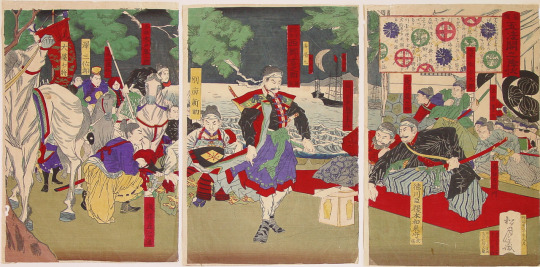
The battle marked the end of the old feudal regime in Japan, and the end of armed resistance to the Meiji Restoration. After a few years in prison, several of the leaders of the rebellion were rehabilitated, and continued with brilliant political careers in the new unified Japan: Enomoto Takeaki in particular took various ministry functions during the Meiji period.

The new Imperial government, finally secure, established numerous new institutions soon after the end of the conflict. The Imperial Japanese Navy in particular was formally established in July 1869, and incorporated many of the combatants and ships which had participated in the Battle of Hakodate.
2 notes
·
View notes
Text







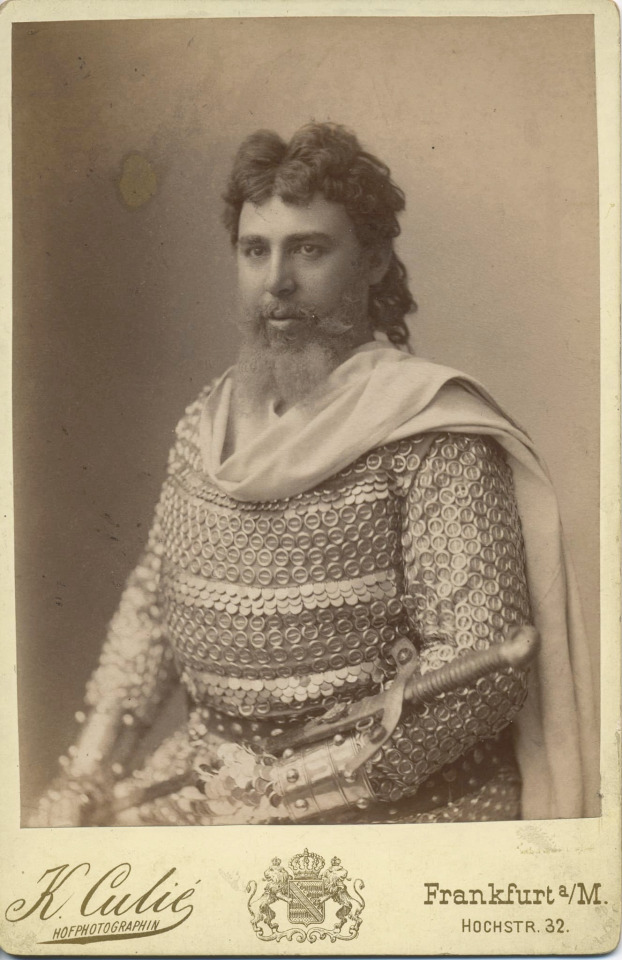





On June 10, 1865, the world premiere of "Tristan and Isolde" by R. Wagner took place in Munich.
„Isolde… wie schön…“
Here are some of the first tenors to have sung the role of Tristan over the years and contributed to the success of this work through their dedication.
Erik Schmedes (27 August 1868, in Gentofte, Denmark – 21 March 1931, in Vienna), Danish heldentenor.
Alois Pennarini (Vienna 1870 - Liberec, Czechoslovakia 1927), Austrian-Hungarian first spinto tenor then heldentenor.
Modest Menzinsky (29 April 1875 in Novosilky, Galicia - 11 December 1935 in Stockholm), Ukrainian heroic tenor.
Karl Kurz-Stolzenberg
Adolf Gröbke (May 26, 1872 Hildesheim - September 16, 1949 Epfach), German tenor.
Iwan Ershov (November 8, 1867 – November 21, 1943), Soviet and Russian dramatic tenor.
Alfred von Bary (January 18, 1873 in Valletta, Malta - September 13, 1926 in Munich), German tenor.
Alexander Bandrowsky (April 22, 1860 in Lubaczów - May 28, 1913 in Cracow), Polish Tenor.
Jacques Urlus (6 January 1867 in Hergenrath, Rhine Province – 6 June 1935 in Noordwijk, Netherlands), Dutch dramatic tenor.
Francesc Viñas (27 March 1863 – 14 July 1933), Spanish tenor.
Richard Schubert (Dessau, Germania; December 15, 1885 - Oberstaufen, Germania; October 12, 1959), German tenor.
Dr. Julius Pölzer (April 9, 1901 in Admont - February 16, 1972 in Vienna), Austrian tenor.
Giuseppe Borgatti (Cento, 17 March 1871 – Reno di Leggiuno, 18 October 1950), dramatic tenor. (with Magini-Coletti as Kurwenal)
Antonio Magini-Coletti (17 February 1855 – 21 July 1912), Italian baritone.
#opera#classical music#music history#bel canto#composer#classical composer#aria#tenor#classical studies#Tristan and Isolde#classical musician#classical musicians#musician#musicians#classical history#historian of music#history#maestro#chest voice#Tristan und Isolde#Richard Wagner#Wagner#classical singer#classical singing#opera history#music#classical
4 notes
·
View notes